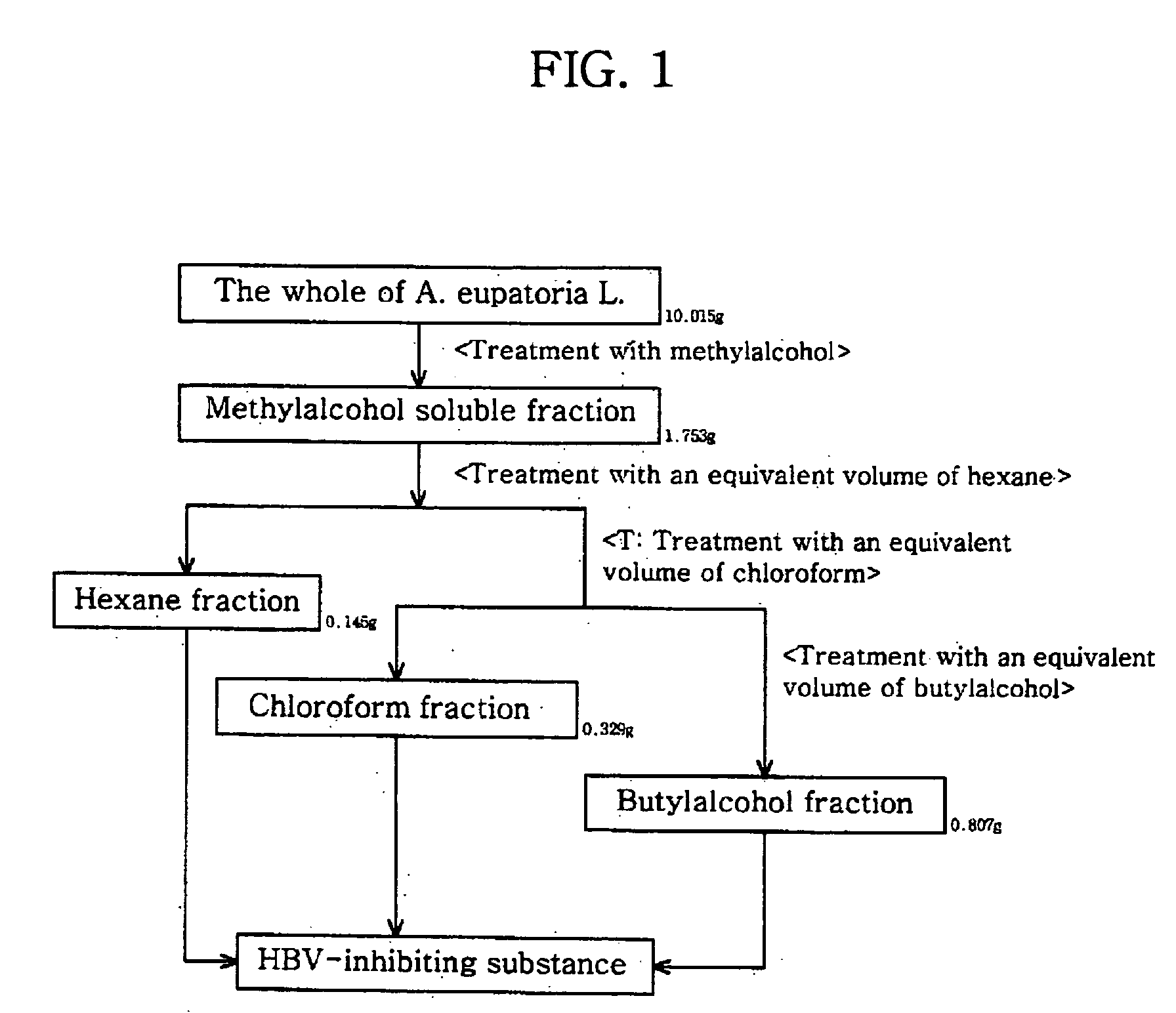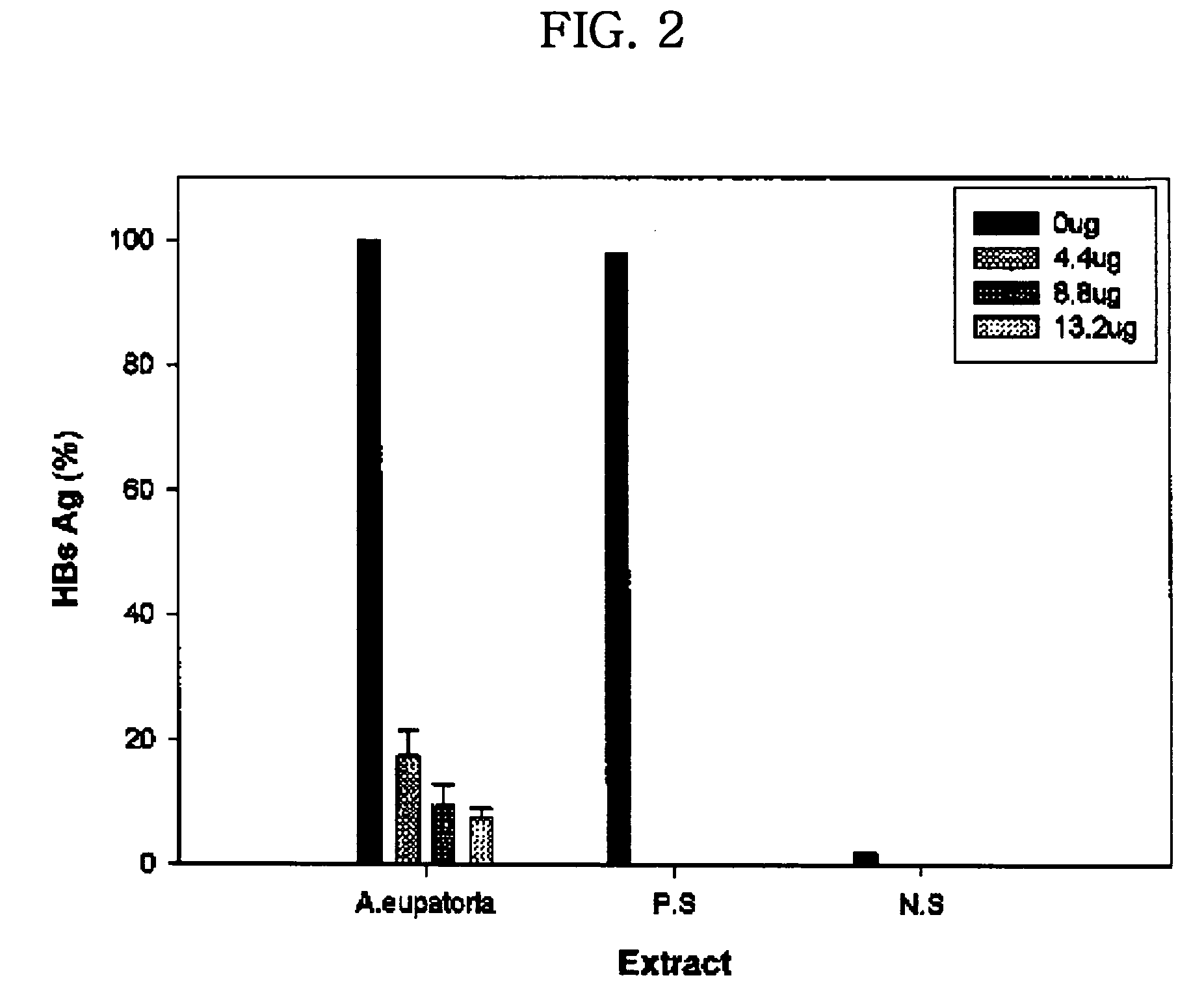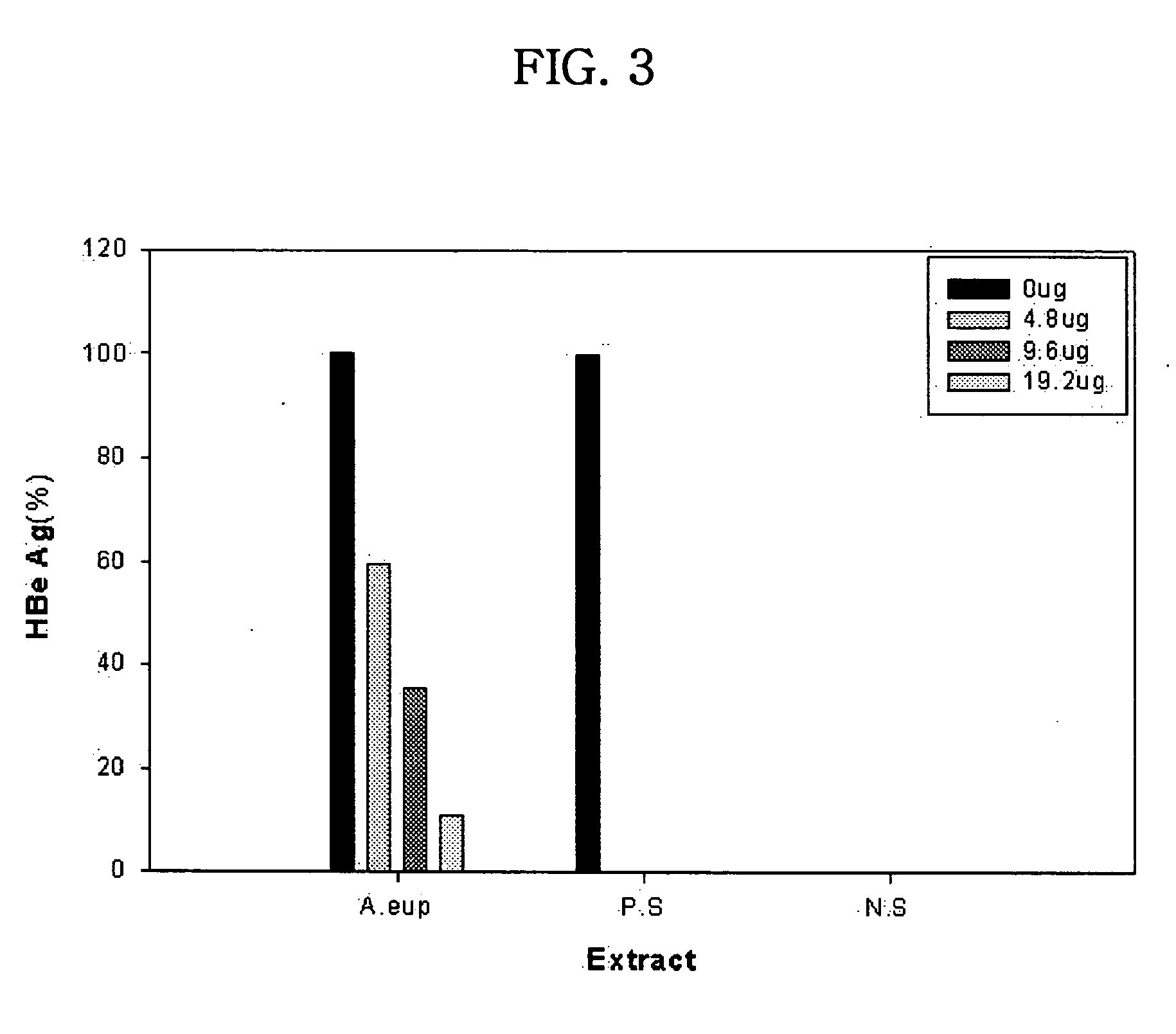Methods for producing agrimonia extracts with improved activity against hepatitis b virus and pharmaceutical and food compositions containing said extracts
a technology of agrimonia and agrimonia, which is applied in the direction of biocide, plant/algae/fungi/lichens ingredients, drug compositions, etc., can solve the problems of limited clinical research on inf, inability to effectively treat hbv infection, and limited application range, so as to suppress the production of surface antigens and envelope antigens, improve the effect of treating hepatic diseases, and improve the effect of effectiveness
- Summary
- Abstract
- Description
- Claims
- Application Information
AI Technical Summary
Benefits of technology
Problems solved by technology
Method used
Image
Examples
example 2
Assay for Activities of Extracts from Plants of the Genus Agrimonia Against Production of Surface Antigens of HBV
experimental example 1
Assay for an Activity of a Water-Soluble Extract from A. eupatoria L. against Production of Surface Antigens of HBV
[0055] 2, 4 or 6 .mu.l of the water-soluble extract (2.2 mg / ml) from Agrimonia eupatoria L. prepared in Example 1 was added to each well of a 96-well plate containing cultured human hepatoma cell line PLC / PRF / 5, which synthesizes and secretes surface antigens of HBV (HBsAg), in which total volume of each well was 100 .mu.l. After 48 hours of incubation, 100 .mu.l of culture media was transferred to another 96-well plate, to which antibodies to surface antigens of HBV (HBsAb) were attached, and incubated at 37.degree. C. for 1 hour. 25 .mu.l of a solution of peroxidase-conjugated surface antibodies was added to each well, followed by incubation of 30 minutes. After being washed with phosphate buffer five times, each well was supplemented with a solution containing a substrate of peroxidase, and color development was then performed. Absorbance of the resulting solution wa...
experimental example 2
Assay for an Activity of a Water-Soluble Extract from A. eupatoria L. Against Production of Envelope Antigens of HBV
[0057] 2.2, 4.4 or 8.7 .mu.l of the water-soluble extract (2.2 mg / ml) from Agrimonia eupatoria L. prepared in Example 1 was added to each well of a 96-well plate containing cultured HepG2 2.2.15 cells, in which total volume of each well was 100 .mu.l. After 48 hours of incubation, 100 .mu.l of culture media was transferred to another 96-well plate, to which antibodies to envelope antigens of HBV (HBeAb) were attached, and incubated at 37.degree. C. for 1 hour. 25 .mu.l of a solution of peroxidase-conjugated surface antibodies was added to each well, followed by incubation for 30 minutes. After being washed with phosphate buffer five times, each well was supplemented with a solution containing a substrate of peroxidase, and color development was then performed. Absorbance of the resulting solution was measured at 450 nm using ELISA reader. Culture medium not containing ...
PUM
 Login to View More
Login to View More Abstract
Description
Claims
Application Information
 Login to View More
Login to View More - R&D
- Intellectual Property
- Life Sciences
- Materials
- Tech Scout
- Unparalleled Data Quality
- Higher Quality Content
- 60% Fewer Hallucinations
Browse by: Latest US Patents, China's latest patents, Technical Efficacy Thesaurus, Application Domain, Technology Topic, Popular Technical Reports.
© 2025 PatSnap. All rights reserved.Legal|Privacy policy|Modern Slavery Act Transparency Statement|Sitemap|About US| Contact US: help@patsnap.com



